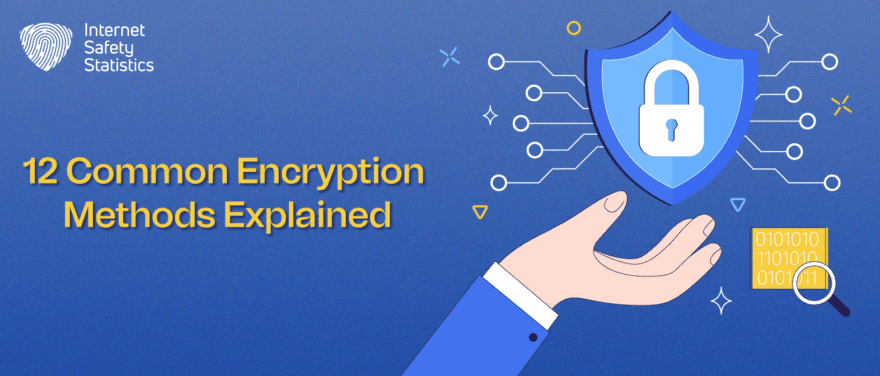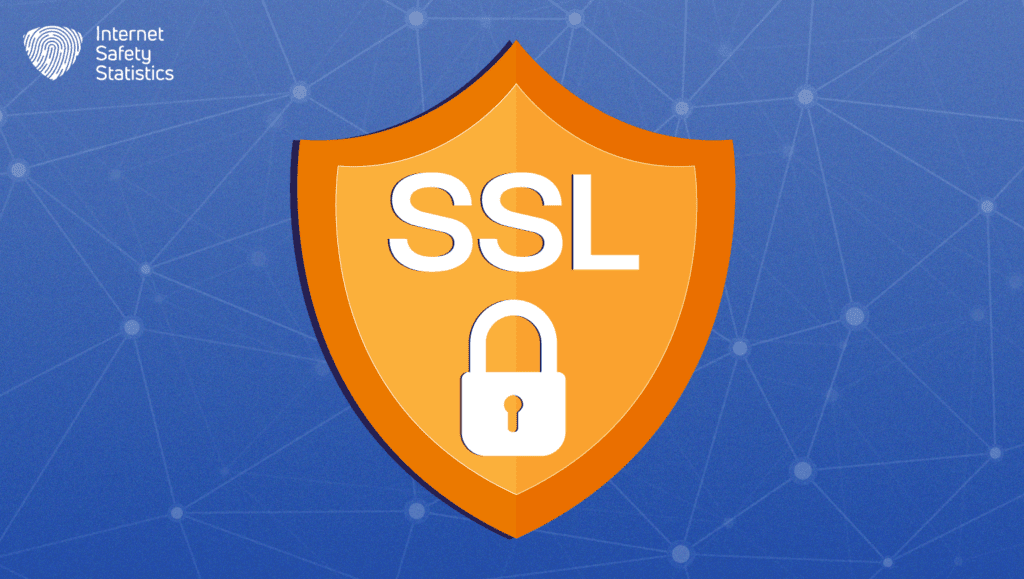
We all have private data we won’t share with others. How can we ensure that only the intended recipient understands your message? One way is to use encryption, which transforms your message into a code that only someone with the correct key can decode. Encryption is a familiar idea. People have used encryption for centuries, from ancient cyphers to modern algorithms. This blog post will explore some of the standard encryption methods used today, how they work, and why they are important for data security.

1. Symmetric Encryption
Symmetric encryption is a type of encryption that uses the same key for data encryption and decryption. This shared key is the linchpin that transforms plaintext into ciphertext and back again, making it accessible only to those who possess it.
The process is akin to using a secret code only the intended recipients understand. It’s a swift method, heralded for its speed in converting information into an unreadable format and reversing the process just as swiftly. However, the Achilles’ heel of symmetric encryption lies in crucial distribution. Sharing the key securely between sender and receiver poses a challenge, as does the scalability of managing multiple keys for myriad communication pairs.
Advanced Encryption Standard (AES) and the Data Encryption Standard (DES) are two examples of symmetric encryption algorithms. AES, adopted as a global standard, offers varying key lengths for enhanced security. On the other hand, DES, while once widely used, now lags due to its susceptibility to modern computational power.
2. Asymmetric Encryption (Public Key Encryption)
In a world marked by the intricacies of data exchange and digital signatures, asymmetric data encryption emerges as a remarkable solution. Asymmetric encryption uses public and private keys for decryption, unlike symmetric encryption. This duality introduces a layer of complexity and security that transcends the boundaries of its symmetric predecessor.
As its name implies, the public key is available to everyone. It acts as a conduit for others to encrypt messages intended for the key’s owner. On the other hand, the private key is kept private. It enables the key holder to decrypt any messages that have been encrypted using their public key.
When data authenticity is crucial, asymmetric encryption excels in safe key exchange scenarios and digital signatures. However, because of its complexity, the process frequently moves more slowly than symmetric encryption.
RSA (Rivest-Shamir-Adleman), a cornerstone of secure communication, and ECC (Elliptic Curve Cryptography), lauded for its robust security with relatively tiny key sizes, are two prominent examples of asymmetric data encryption methods.
As we continue our exploration, we’ll uncover more encryption methods that form the bedrock of digital security, each with its intricacies and applications. Join us on this voyage as we demystify encryption’s complexities and highlight its indispensable role in our interconnected world.
3. Hash Functions
A hash function is different from other traditional encryption methods. It has a very important role in securing the integrity of data. It’s a mathematical algorithm that deals with inputs and returns a fixed-size string of characters. This is usually in a sequence of numbers and letters called hash value/code.
The Purpose of Hash Functions in Data Integrity: Its main function is to verify data integrity; this is done by producing unique value once data is passed through it. Any minor change to the input data will change the hash value significantly. This makes the hash functions powerful in detecting any minor change in the data.
Creating a Hash Value: Creating a hash value by running the input data through the hash algorithm. The result is a hash value that appears as a seemingly random sequence of characters. Any slight change in the input data will result in a change in the hash value, which makes it difficult to alter the original data.
Applications of Hash Functions
- Password Hashing: Hash functions are used to secure passwords by storing the hash value of the passwords instead of storing the original data.
- Digital Signatures: Hash functions are also used to secure digital signatures by encrypting the document’s hash value with a private key. This secures the signature authenticity.
- Data Deduplication: Hash functions identify duplicate data in storage systems. Identical files produce the same hash value, enabling efficient storage management.
Commonly used Hash Algorithms: Among the well-known hash algorithms is SHA-256 (Secure Hash Algorithm 256-bit), a member of the SHA-2 family. It generates a 256-bit (32-byte) hash value widely used for data integrity verification. SHA-256’s cryptographic strength and relatively short hash size make it a robust choice for various applications.
4. SSL/TLS Encryption

The Essentials of SSL/TLS Encryption: SSL (Secure Sockets Layer) and its successor TLS (Transport Layer Security) are cryptographic protocols designed to establish secure connections between clients (such as web browsers) and servers. These protocols encrypt the data exchanged between these entities, safeguarding it from potential interception and unauthorised access.
Ensuring Secure Communication: SSL/TLS protocols employ symmetric and asymmetric data encryption methods to provide secure communication. Upon logging into a secure website, the server provides a digital certificate to the public key. The user then uses this key to encrypt a symmetric session, which is used for data encryption and decryption.
The SSL/TLS Handshake Process: The SSL/TLS handshake process is a choreographed sequence of steps that establishes a secure connection between the client and server. It involves negotiation of encryption algorithms, exchanging cryptographic keys, and verifying the server’s authenticity through its digital certificate. Once the handshake is complete, data can be exchanged securely.
The Role of Certificates: Digital certificates, issued by trusted Certificate Authorities (CAs), play a pivotal role in SSL/TLS encryption. These certificates verify the server’s identity. The use of certificates ensures that clients are communicating with legitimate servers and not with malicious entities.
Importance in Web Security and Transactions: SSL/TLS encryption is indispensable for web security. When users see the padlock icon in their browser’s address bar, it indicates that the website uses SSL/TLS encryption. This level of encryption is essential for safeguarding private information during online transactions and interactions.
5. End-to-End Encryption
This data encryption method aims to provide unparalleled privacy by enabling only the intended recipients to access the decrypted content.
The Core Concept: End-to-end encryption operates on a simple principle: data is encrypted on the sender’s side and decrypted on the recipient’s side. The critical distinction is that the data remains encrypted while traversing intermediaries, including servers and networks. This ensures that only the sender and recipient possess the necessary decryption keys to access the original content.
Applications in Messaging Apps and Platforms: End-to-end encryption finds its zenith in messaging apps and communication platforms. Exchanged messages are encrypted on the sender’s device and remain that way until they are decrypted from the recipient’s device. This prevents any third party, including the service provider, from accessing the content of the messages.
Advanced Encryption Methods
These data encryption methods are used in more advanced settings.
6. AES (Advanced Encryption Standard)
AES is one of the world’s most widely used data encryption methods. It was developed by the U.S. government in 2001 to replace the outdated DES (Data Encryption Standard). AES is based on a mathematical operation called a substitution-permutation network, which mixes and rearranges data bits using a secret key. AES can encrypt data in blocks of 128, 192, or 256 bits, depending on the key length. The longer the key, the stronger the encryption. AES is considered very secure and resistant to attacks and is used for various purposes, such as encrypting files, emails, messages, and online transactions.
7. RSA (Rivest-Shamir-Adleman)
It’s a popular asymmetric encryption method that uses two different keys (private and public keys) for encryption and decryption. The public key can be shared, while the private key should be kept secret.
RSA is based on the difficulty of factoring large numbers into their prime factors, which are the building blocks of numbers. RSA can encrypt data by multiplying two large prime numbers and using their product as the public key. The private key is derived from the prime factors, which are hard to find without knowing them in advance. RSA can be used for digital signatures, authentication, and key exchange.
8. ECC (Elliptic Curve Cryptography)
ECC is an asymmetric encryption method using mathematical curves to create public and private keys. ECC can provide the same level of security as RSA with smaller key sizes, which makes it more efficient and suitable for mobile devices. ECC is based on the problem of finding points on a curve that satisfy a certain equation, which is also hard to solve without knowing the parameters of the curve. ECC can encrypt data by using a point on the curve as the public key and a number as the private key. The private key can be used to find another point on the curve, which can be used to decrypt the data.
9. Blowfish
Blowfish is a symmetric data encryption method that uses a block cypher to encrypt data in 64-bit blocks. Blowfish was designed by Bruce Schneier in 1993 as a fast and simple alternative to other encryption methods. Blowfish has a variable key length from 32 to 448 bits, giving it flexibility and security. Blowfish is based on a Feistel network, which splits the data into two halves and applies a series of rounds of substitution and transposition using the key. Blowfish is known for its speed and simplicity. It is used for various purposes, such as encrypting files, passwords, and network traffic.
10. Twofish
Twofish is a symmetric data encryption method that uses a block cypher to encrypt data in 128-bit blocks. Twofish is a Blowfish extension with a fixed key length of 256 bits. Twofish was designed by Bruce Schneier and other cryptographers in 1998 as a candidate for the AES standard. Twofish is based on a modified Feistel network, which adds more complexity and security to the encryption process. Twofish is considered one of the strongest encryption methods and was a finalist for the AES standard.
11. MD5 (Message Digest Algorithm 5)
MD5 is also a hash function that creates a 128-bit string of characters by converting data. MD5 can be used to check the integrity of data but not to encrypt or decrypt it. Ronald Rivest designed MD5 in 1991 as an improvement of MD4. MD5 is based on a compression function similar to SHA-1 but with fewer rounds and complexity. MD5 is no longer considered secure due to its vulnerability to collisions, which means that different data can produce the same hash value.
12. PBKDF2 (Password-Based Key Derivation Function 2)
PBKDF2 is more like a cryptographic generating function that generates password keys than a data encryption method. PBKDF2 can be used to create strong keys for encryption or hashing by applying salt and multiple iterations of a hash function to the password. An iteration is a repetition of the hash function that increases the time and effort required to crack the password. PBKDF2 can use different hash functions, such as SHA-1, SHA-2, or SHA-3, depending on the desired output length and security level.
Data Encryption is one way to keep our data safe and private in a world where our privacy is threatened daily. There are many encryption methods, from basic methods to advanced ones. Choose the method that suits your skills and knowledge.
